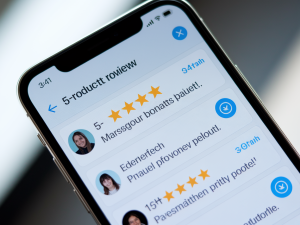Choosing the right pricing strategy is crucial for any business looking to grow and build a sustainable customer base. Pricing strategies such as penetration pricing or promotions influence how a customer experiences a product or brand, and can help attract new customers and turn them into loyal buyers. In this article, we will discuss different pricing strategies and how they can be used effectively in combination with cashback campaigns and ProductPlus promotions.
Effective Pricing Strategies and Their Impact
What is a penetration pricing strategy?
A penetration pricing strategy involves a low price to gain market share quickly. This works especially well for new products in a crowded market.
- Benefits: Helps companies quickly build a customer base and capture market share.
- Disadvantages: May lead to low profit margins and perception of lower product quality.
Deze strategie kan effectief zijn bij een marktintroductie en kan versterkt worden met promotionele acties zoals cashbackcampagnes, die klanten een directe stimulans geven om het product te proberen.
Skimming strategy: maximising profits with high starting price
The skimming strategy uses a high starting price, which is gradually reduced over time. This can create an exclusive feel around the product.
- Benefits: Maximises early adopters’ gains and builds a premium image.
- Disadvantages: High starting price may delay mass adoption.
Innovative technology products or luxury items can benefit from a skimming strategy, where the price is reduced in steps as the first enthusiastic buyers have made their purchase. This helps to maximise profits in the first phase and position the brand as premium.
Dynamic pricing: Flexible pricing based on demand
Dynamic pricing is the regular adjustment of prices based on demand, competition and other market information.
- Benefits: Increases profits by responding flexibly to market dynamics.
- Disadvantages: Can be complex and cause customer confusion due to constant changes.
Especially in the e-commerce world, where supply and demand change rapidly, dynamic pricing is a powerful strategy. It allows companies to maximise profits during periods of high demand and respond to changing conditions.
Promotional pricing strategies: Cashbacks and temporary discounts
Promotional pricing strategies offer temporary discounts and benefits, such as cashback promotions, which allow customers to get part of their purchase amount back. These promotions are aimed at encouraging direct purchases.
- Benefits: Temporary promotions give a sense of urgency and attract new customers.
- Disadvantages: Can lower the value perception of the product if applied too often.
Promotions should be carefully planned to attract customers without becoming dependent on discounts. Cashback campaigns are effective for companies looking to boost sales in the short term while gaining insight into customer behaviour.
Psychological pricing: The influence of perception
Psychological pricing plays on customers’ perceptions by using price presentations such as €9.99 instead of €10. This type of pricing strategy is often used to encourage impulse purchases.
- Benefits: Helps influence buying decisions.
- Disadvantages: Customers may get used to this tactic, reducing its effect.
Charm pricing and other psychological techniques are especially effective in retail environments and direct sales. By strategically presenting prices, companies can increase customers’ perception of value and willingness to buy.
ProductPlus/Bundle strategy: increased value per purchase
With a ProductPlus strategy, customers receive an additional item for free or at a discount when they purchase a product. This increases the value of the purchase and encourages customers to buy more.
- Benefits: Promotes cross-sell opportunities and increases customer value.
- Disadvantages: Can, if overused, reduce profit margins.
ProductPlus promotions are particularly successful in sectors where products can be sold well together, such as electronic accessories or beauty products. This strategy not only boosts direct sales but also increases customer satisfaction by offering extra value.
Loyalty programmes and pricing strategy: The perfect combination
Loyalty programmes complement pricing strategies, where customers receive repeat benefits such as points, discounts or exclusive offers. This helps companies retain customers and increase customer value.
Loyalty programmes can be linked to promotional pricing strategies to reward customers for their purchases and increase their loyalty. By deploying smart pricing strategies in combination with loyalty programmes, companies can build long-term customer relationships and strengthen their brand value.
Which Pricing Strategy Fits Your Business?
Applying pricing strategies effectively is a powerful tool to gain market share, attract customers and optimise profitability. Pricing strategies can also be linked to marketing promotions such as cashback promotions and loyalty programmes to increase customer loyalty and drive long-term customer value. For companies seeking support in implementing pricing strategies and associated promotions, Service Bureau Jansen offers the right expertise and solutions. Fill in the contact form below to find out more about how we can help.





